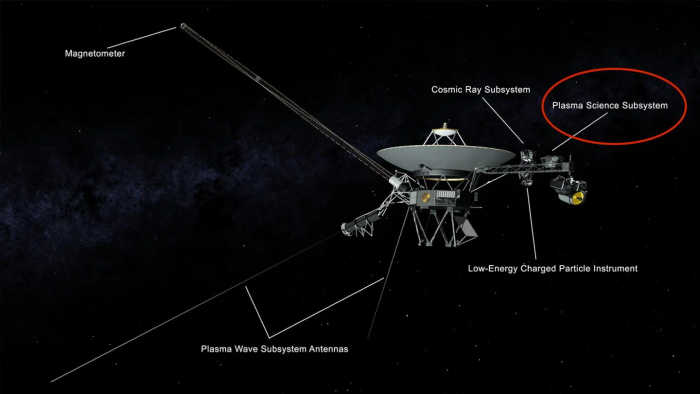Published 01:28 IST, October 3rd 2024
Voyager 2's Final Chapter: Instrument Shutdown Marks New Phase in Deep Space Journey
NASA has powered down Voyager 2’s plasma science instrument to save energy, marking a significant milestone as the spacecraft continues its deep space journey.
- Science News
- 3 min read
NASA has announced the decision to turn off one of Voyager 2’s five remaining instruments, signaling the potential nearing of the spacecraft's historic mission. In an October 1 announcement, the agency explained, “engineers held off as long as possible to continue gathering valuable and unique data, but ultimately chose to power down the spacecraft’s plasma science instrument to conserve Voyager 2’s remaining power supplies.”
Launched in 1977, the Voyager probes were designed to travel farther into deep space than any other human-made objects. However, maintaining their operational systems requires a sustainable power source. Both spacecraft rely on three radioisotope thermoelectric generators (RTGs) fueled by decaying plutonium-238. While they initially provided about 470 watts at 30 volts, the plutonium's 87.74-year half-life has led to an annual power loss of roughly 0.79 percent. After over 47 years in operation, the probes now function on an estimated two-thirds of their original power.
The plasma science instrument was designed to study the Sun's particle emissions, utilizing four cup-like tools. Three of these cups are oriented towards the Sun to record solar wind within the heliosphere, while the fourth captures data on various planetary magnetospheres and interstellar space. Although critical for determining Voyager 2’s exit from the heliosphere in 2018, the instrument's usefulness has decreased significantly since then. NASA noted that, at the time of the shutdown, the plasma science instrument was only providing particularly useful data about once every three months.

The decision to shut down the instrument reflects the inevitable scaling back of Voyager 2's operations. Sending the “power off” signal on September 26 took 19 hours to reach Voyager 2, located over 12.9 billion miles from Earth at about 48 degrees south of the sun’s ecliptic. The confirmation signal took another 19 hours to return.
This is not the first instance of engineers shutting down equipment aboard the Voyager probes. Following their initial mission surveys of the solar system's gas giants in the 1980s, NASA turned off multiple nonessential instruments. Currently, all nonessential tools aboard both spacecraft, including several heaters, are offline. Voyager 1’s plasma science instrument was also deactivated in 1980 but was turned off to conserve power in 2007.
Despite the challenges, both Voyager probes continue to make history by venturing further into deep space than any other human-made objects. With no fatal issues, NASA believes it is possible for Voyager 1 and 2 to transmit data from at least one operating instrument well into the 2030s. “While this may be a longshot, NASA engineers are doing everything they can to increase those odds.”
Updated 01:28 IST, October 3rd 2024